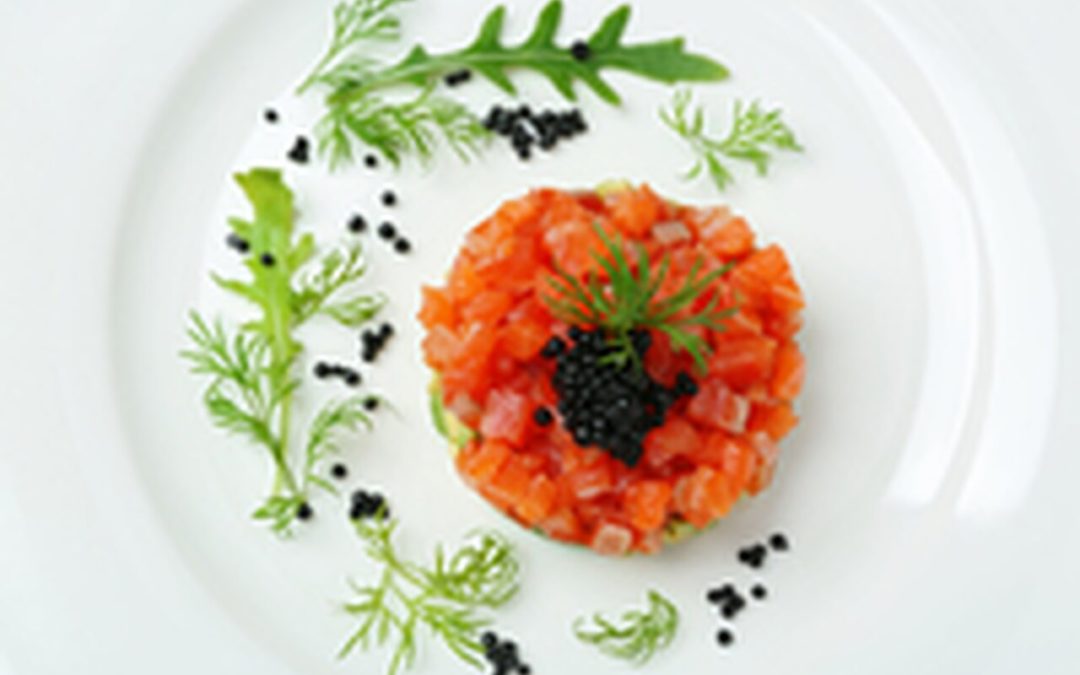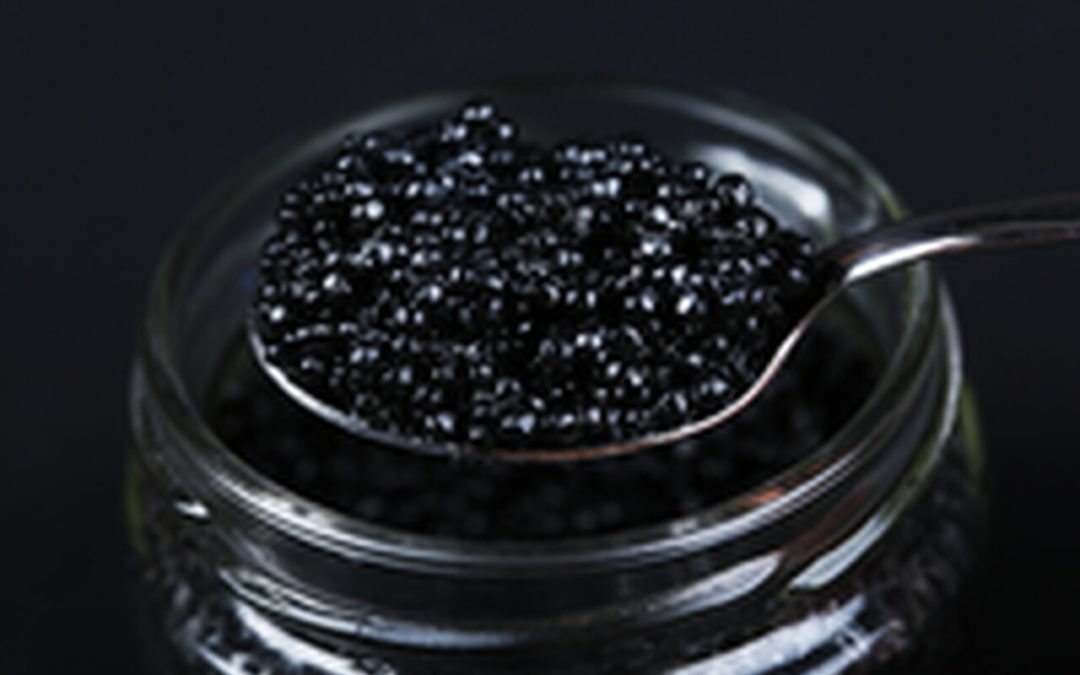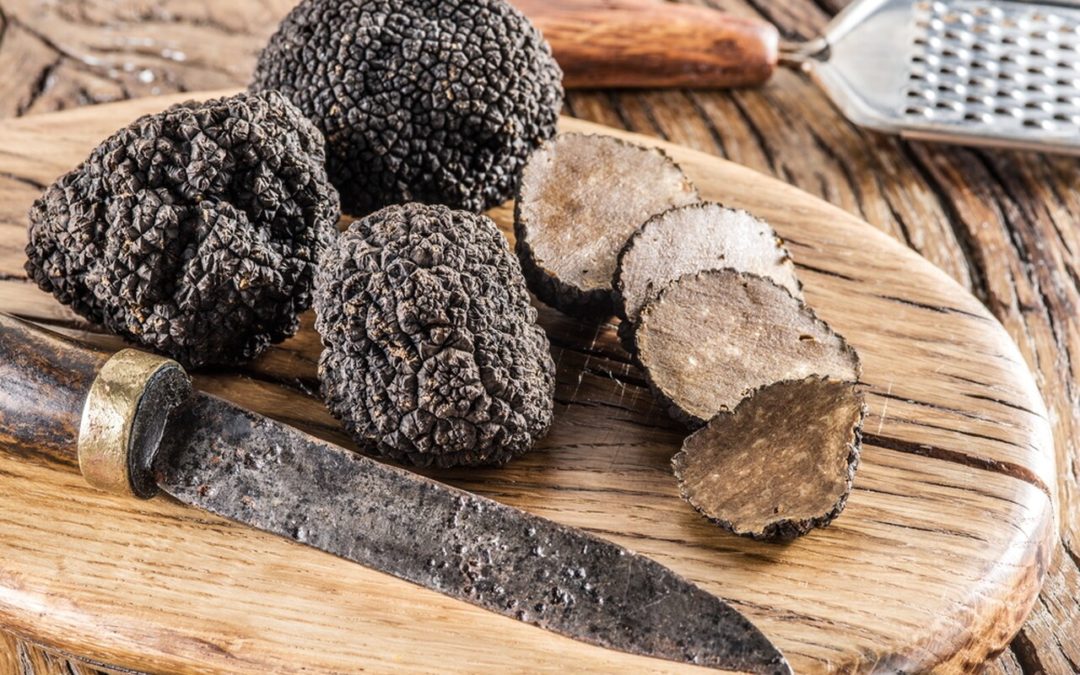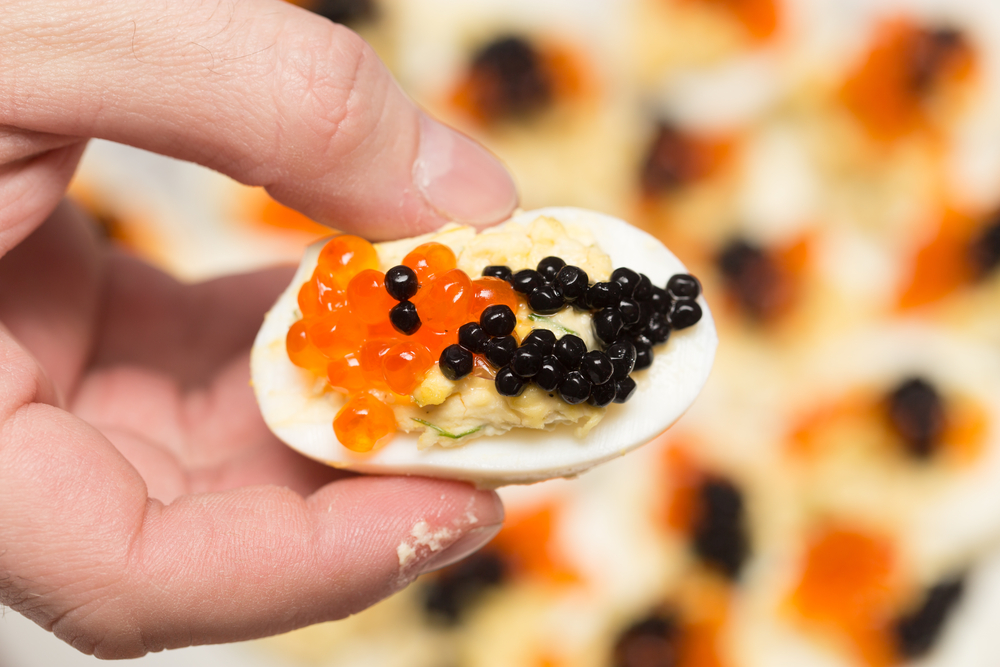
by HOCAFF Team | Aug 1, 2016 | General
Cooking with Caviar: Summer Recipes with Caviar
Caviar is literally one of the “coolest” foods and a perfect accompaniment to many traditional summer fare. Using even the least inexpensive caviar will add sophistication and elegance to any event. A dollop of this delicacy can transform a mundane salad into delectable extravagance. Recipes with caviar can be prepared with the roe from wild or high quality farm fresh Caviar. Although warm weather entertaining typically conjures up a hot grill and all the fixings, summer recipes with caviar can have guests reminiscing about your gathering through fall and even into the winter months.
Whether you are hosting a casual backyard affair, an elegant summer night soirée for a few close friends or an intimate dinner for two, top it off by pairing caviar with some classic favorites. Below are a few ideas of how you can enhance your summer recipes with caviar.
- What’s to stop you from starting off the festivities with a show-stopping caviar parfait. This would be perfect if you are in the mood to share that classic Siberian Ossetra Caviar you’ve been dying to open. Or, for a less expensive option, it would be just as pleasing to crown each parfait with a spoonful the shimmering black roes of the Hackleback caviar. The accompanying ingredients for this parfait includes lemon juice, fresh chopped dill, plum tomatoes, hard-boiled eggs and bread sticks (optional). Follow the instructions for these mouthwatering mini caviar parfaits here. Don’t forget to show them off in your most stunning parfait glasses.
- Try a Tuscan cantaloupe infused Sea Salad with a quenelle of California Royal White Sturgeon Caviar. Official name for this nontraditional pairing “ Crab with Cantaloupe and Caviar – Sea Salad” by Andrew Swallow of Epicurious. This is a multifaceted flavor combination that is easy to make with a few choice ingredients such as cantaloupe, crabmeat, Colvin Vinaigrette, Avocado, Royal Sturgeon caviar and a few other choice ingredients. Follow this link to make this memorable summer caviar recipe.
- For intimate outdoor dining on a warm summer night, set an elegant table with a figs and wine centerpiece as a backdrop for a sumptuous caviar entree. Consider caviar-topped smoked salmon on a blini with crème fraîche. With this recipe, the caviar you choose is entirely based on your preference although since it’s a meal for two it is entirely decadent to choose a high end variety from the Kaluga selection for an unforgettable dining experience. Follow this link to buy caviar online and get the ingredients and recipe for this caviar topped smoked salmon and other gourmet indulgences for your upcoming occasion.
- Add sophistication to any summer gathering with a fun sampling of caviar inspired recipes from world renown chef Wolfgang Puck. He introduces a variety of appetizers, dips, canapes and pizza with exquisite gourmet toppings from an impressive assortment of caviars. These can vary in color, flavor and price according to your preference and budget. For instance, a red caviar with avocado will brighten up your table at a fraction of the cost of one of the black caviar varieties. Find recipes and instructions here for how to make these summer favorites.
Find more recipe ideas and a wide selection of caviar and other delicacies at House of Caviar and Fine Foods. Our selection of caviar that we have available online can make sourcing both the imported and domestic caviar for your summer brunches, dinners, weddings, parties and other events easy and effortless. In addition to purchasing caviar online you will also find your beautiful selection of gourmet meats, Foie Gras, truffles and other caviar accessories.

by HOCAFF Team | Jul 15, 2016 | General
Learn the Origins of Your Favorite Delicacy: The History of Caviar
Long before Caviar became affiliated with royalty, it was part of the diet in areas where Sturgeon fish was in great abundance. Although accounts of the history of Caviar does not pin a specific date on when the epicurean value of this decadent cuisine began, some records date as far back as pre-historic times.
In essence, caviar is a decadent preparation of the unfertilized eggs or roe of a sturgeon fish. Based on some accounts, caviar is actually the variant of the Persian word “khaya-dar” which means having eggs or egg bearing fish. The Persians who collected the fish eggs for their perceived medicinal value may also have been the first to prepare and appreciate their unique piquancy. However, the tradition of salting roe originated with the Chinese who used this method to preserve Carp eggs.
Ancient classical literature contains several references about caviar. Aristotle who lived during the 4 th Century B.C. spoke so highly of the Sturgeon fish eggs that it became a consummate offering at banquets. Since Sturgeons were found mainly in the Caspian Sea and Black Sea, it was the Russian Tsars that launched its popularity as an opulent epicurean delight. Its status was also significantly heightened towards the end of the 1800s, when the French started importing caviar from Russia, such as Beluga Caviar. In order to preserve the roe for transporting purposes however, the delicate eggs were heavily salted and packed into wooden crates. Despite the fact that these crude processing methods belied the quality of the end product, through consistent demand, Caviar, managed to continue its evolution as a highly sought after and pricey fare. At one point in Britain’s history, Sturgeons were reserved exclusively for the kings and elite of that society and was even knighted as the “Royal Fish”.
Still, at one point in American history, a serving of caviar was sold for a nickel in fine restaurants. Even more unbelievable, this salty delicacy was at times given to saloon patrons to encourage spending on liquor. The proliferation of Sturgeon in the Delaware River eventually spurred the development of a caviar business in 1873 by a German immigrant by the name of Henry Schacht. Soon Schacht began exporting Caviar throughout the world, including to Russia, for a mere dollar a pound. By the end of the 19th century, the United States was producing approximately 90% of the world’s caviar.
Today, this ultimate luxury food is available in a range of prices and varieties. Although the best caviar is a matter of preference, experts say quality is determined by handling and a number of other variables such as maturity of the eggs, texture, color and depth of flavor.
Topping the list of most expensive and well known (yet restricted to sell in the US) is the Beluga Caviar. Although not all Caviar lovers will agree that this is the best of the best, it definitely commands the highest price. Beluga Caviar along with Sevruga and Ossetra are considered to be the most sought after and expensive Caviar. However, overfishing has depleted and endangered the Caspian Sea Sturgeon population, which has made Beluga Caviar illegal to import to the USA. As the Beluga becomes less available, it has created a growing demand for Golden Imperial Ossetra or Kaluga Caviar . Experts say the Kaluga roe is an exquisite substitute that is similar in appearance and flavor to Beluga Caviar. The selection of Kaluga Caviar comes from the Huso Daricus Sturgeon and Amur Sturgeon eggs. Most importantly for many of today’s consumer, it is a sustainable product.
The fall off of supply of Caviar from the Caspian and Black Sea has also expanded interest and the market for other types of fish roe including Hackleback, Royal White Sturgeon , Paddlefish, Bowfin, trout and salmon, amongst others. For instance, the sweet buttery and nutty flavor of the Hackleback Caviar is similar to Caspian Ossetra. As such, as caviar lovers expanded their palate, many consider domestic caviars to be an appealing and affordable alternative to their international counterparts.

by HOCAFF Team | Jul 12, 2016 | General
New to Truffles? Learn all about the different types of truffle mushrooms.
In culinary vernacular, truffle are a pricey epicurean mushrooms. Like caviar, over the centuries truffles has been a delicacy enjoyed primarily by food Connoisseurs and the elite sectors of society. In the last thirty years however, House of Caviar & Fine Foods has enticed a broader consumption base with their selection of the most elusive and preferred varieties mostly from France and Italy.
Although there are dozens of different types of truffle, only a few are actually edible. They are mostly classified based on taste, smell and appearance. Although even the rarest variety can be found in locations around the world, they are not always easy to find. As such, foraging for rare types of edible truffle mushrooms and actually locating them can feel like discovering a treasure. Also, the specific conditions necessary for cultivation of these varieties paired with their tantalizing aroma, pungency and perceived aphrodisiac properties increases both their allure and value.
Ounce for ounce, the Italian White Alba truffle is recognized as the most expensive. The price of Alba Truffles could vary from $ 2,500 to $ 4,000/lb. At a recent auction, an investor paid as much as $330,000 for a white truffle mushroom weighing under three pounds. Falling under the umbrella of the world’s best truffle mushrooms are:
Italian white truffle have a symbiotic relationship with the roots of oak, willow, beech and poplar trees. They are aromatically stronger than others with a distinctive earthy and garlicky taste. Coupled with a smooth texture, white truffles have a reputation of being adept at luring diners in from the first whiff or bite. Despite their extravagant price tag, white truffle mushrooms lend their essence primarily in a supporting role to main dishes. It has been shaved on everything from risotto to lobster and even on a very expensive breakfast bagel in upscale venues. Italian White truffle is found in Piedmont and Tuscany in Italy.
The Black Winter Truffle from France or Italy is known for its fruity qualities. A brown-black exterior covers its veiny white interior. These fragrant and popular delicacies are mostly found in the Périgord region of France. Black truffle mushrooms complement cuisines all over the world and can turn even the most mediocre dish into a decadent dining experience. It grows between November and January.
Although much milder than its more expensive counterparts, Black summer truffle mushrooms have nonetheless clearly established their culinary value. Since cooking releases the aroma and flavor of these summer grown truffles, they are a great addiction to soups, sauces, meat and seafood such as caviar and lobster. Their contribution as a finishing element when shaved on other main dishes should not be overlooked.
These delicious truffles are available fresh or preserved in tins and jars. In a combination of truffle specialties such as Black Truffle Tartufata Sauce, Italian White Truffle Butter, Winter Black Truffle Cream and Black and White Truffle Sea Salt to name a few. In addition to fresh truffles, these appealing configurations help to satisfy a range of palates as well as being a fantastic way to introduce this delicacy to the “as yet” uninitiated truffle consumer.

by HOCAFF Team | Jun 28, 2016 | General
Raise the bar on your next recipe by adding caviar.
Caviar is a delicacy that has evaded the masses for some time, but more alternatives to the black gold found in the Caspian Sea are allowing people to either forego the imported pearls and enjoy domestic sources of caviar from different fish such as salmon, trout, flying fish, etc. or try both the classic delicacies and the American varieties.
Purists hold that caviar should only be served on toast points or unsalted crackers in order to allow the taste and texture to stand out as the star of the plate. They would then follow up their bite with a straight shot of frozen vodka. Others who are not strict about their caviar eating experience enjoy adding a few extras to their caviar such as crème fraiche, lemon wedges, minced onion, and more while accompanying their morsels with champagne.
Once you have tried caviar in its simplest form, perhaps you may be interested in seeing it in a supporting role amongst other components to make up an appetizer. Chefs have experimented with ways to cook with caviar, adding it to dishes to capitalize on distinct flavors in an effort to create culinary masterpieces. Some are masterfully complicated and others are perfect for looking fancy without breaking a sweat or the bank.
A traditional caviar appetizer is Caviar on Blini. A blini is a Russian pancake made with yeast. The blini – about the size of a silver dollar – is topped with crème fraiche and then topped with salmon or trout roe.
Upgrade your favorite secret recipe for deviled eggs with these toppings: a teaspoon of caviar, a dollop of crème fraiche and an elegant slice of chive. These deviled eggs with caviar are great at any gathering.
Pate is traditionally a mixture ground meat and fat in a spreadable form. This common French dish can be altered to take on a more aquatic air with the use of of smoked salmon and caviar. Serve the smoked salmon on a base of salmon mouse and top the stack with a dollop of caviar. Serve the smoked salmon and caviar pate with a slice of lime and avocado and eat with crackers.
If you’re feeling a bit adventurous, try a truffle custard with crab and caviar. This appetizer/first course is decadent and rich with ingredients like heavy cream, milk, crab meat, truffle oil, and of course caviar. To assemble this recipe, fill a short glass with the truffle custard and place the crab meat on the top. The creaminess of the custard will support the meat and prevent it from sinking. Top with a drop of black caviar.
Twice-cooked potatoes with caviar is special because of the type of caviar sitting atop the potato skin which is stuffed with a mixture of potato and crème fraiche. American Paddlefish caviar has a nutty and fruity flavor, introducing an interesting dynamic to the dish.
Regardless of which caviar recipes you experiment with and how you choose to plate your caviar, it should always be kept on ice when it is in its tin or jar. It also should be consumed on one occasion and should not be saved for later. The quality and freshness is integral to the tasting experience and adding caviar to a recipe is sure to take it to the next level. Find a wide selection of caviar as well as other fine delicacies and caviar recipe tips and at the House of Caviar and Fine Foods.
by HOCAFF Team | May 8, 2016 | General
If you are a lover of caviar, then you quite likely have a discernible taste for gourmet foods of all kinds. That’s why http://houseofcaviarandfinefoods.com/ caters to not just the caviar lover but the gourmet food connoisseur as well. We have many fine foods to choose from, delivered fast and fresh to your house. From truffles to escargot and everything in between, it’s not too hard to imagine the high quality of the products we sell here. After all, our track record speaks for itself.
We’ve been in this business for the last 30 years, established in the early 1980s. House of Caviar, as your official importer of caviar and fine foods, has offices in the United States, Belgium and Holland. We boast an impressive line of fine foods to please every palate.
Foie Gras
We offer a wide range of tasty foie gras, which is basically the liver of a duck or goose. Check out the many types we sell:
- Fresh Raw Foie Gras: 100 percent corn featuring a nutty yet sweet taste.
- Foie Gras Whole: Pure foie gras or lobes of foie gras
- Frozen: High grade 100 percent duck foie gras which is harvested and then flash frozen to seal in freshness.
- Sliced: Hand sliced, frozen and vacuum packed.
- Whole Moulard duck breast: Matured over a period of seven days, punctuated by a deep red color with rich overtones.
- Pasteurized or “semi-cooked” Foie Gras: 100 percent foie gras featuring a creamy texture. Comes in an easy-to-open metal can or jar.
- Whole: Whole liver, enhanced by port wine or Armagnac.
- Other: parfait or mousse
Truffles
Our truffle line is stupendous, offering you the very best in quality highlighted by the quickest delivery to ensure freshness. Here are some of the truffle types we sell:
- Black summer/winter
- Black
- Carpaccio
- French
- Spring white/summer
- Truffle juice
- Truffle complements: honey, truffle cream, oil, butter, salt
Escargot
Another worldwide delicacy, escargot is comprised of cooked snails, revered for its unique texture and taste. There are many kinds, including ones hailing from France, which come from the species Helix pomatia, and those that hail from elsewhere in Europe such as the Elona quimperiana species.
Tuna Fillets and Anchovies
You will love the taste of our wild caught hand-packed and dolphin-safe yellowfin tuna which makes up our impressive line of imported gourmet tuna products. All tuna is caught in the Eastern Tropical Pacific Ocean, yet prepared in Costa Rica. Immersed in water or olive oil, the tuna can be flavored with garlic, oregano, jalapeño, smoke oil, and lemon – your choice. Also available in a range of flavors? Our European anchovies, such as large white anchovy fillets, marinated in oil and vinegar, flavored with anything from garlic to basil.
All of the fine foods you find here at House of Caviar are sure to please you and all your guests. Order fresh today…you won’t be disappointed!




